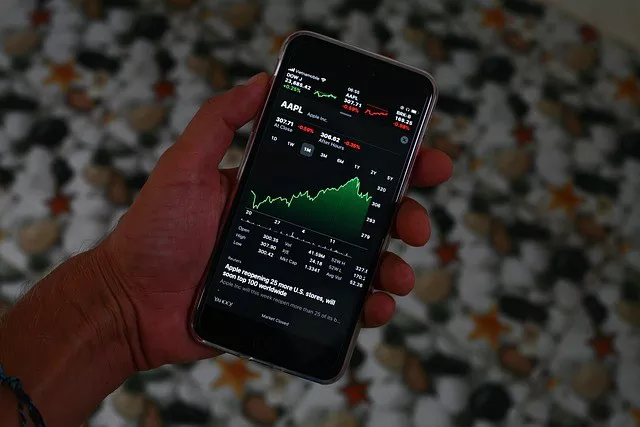Gold has been a symbol of wealth, beauty, and power for millennia. Its allure has transcended time and cultures, making it one of the most coveted and sought-after assets in the world. Over centuries, gold has witnessed periods of economic boom and bust, but its intrinsic value remains steadfast. In this article, we delve into the fascinating journey of gold prices and explore the pinnacle it reached as the highest price in history.
The Historical Perspective
To understand the highest price of gold in history, we must first embark on a historical journey through the ups and downs of this precious metal’s value. Gold’s use as a form of currency dates back to ancient civilizations, such as the Egyptians and Greeks. These early societies recognized the rarity and durability of gold, which made it an ideal medium of exchange.
During the Roman Empire, gold became a standard unit of currency, solidifying its importance in the world’s economy. However, like any commodity, gold’s price fluctuated based on supply and demand dynamics. Wars, discoveries of new gold deposits, and technological advancements all played a role in shaping its price trajectory.
The Gold Rush Era
The 19th century ushered in a new era for gold prices as significant discoveries of gold deposits occurred across the globe. The California Gold Rush of 1848 and the subsequent Klondike Gold Rush in the late 1890s were pivotal events that drove gold prices to unprecedented heights.
During these gold rushes, people from all walks of life flocked to the goldfields in the hopes of striking it rich. The surge in demand for gold and the massive inflow of newly mined gold caused a spike in prices. While these events led to remarkable short-term price increases, they were not the highest prices in history.
The Great Depression and the Gold Standard
The 20th century brought significant economic challenges, including the Great Depression of the 1930s. During this period, many countries abandoned the gold standard, which had tied their currencies to a fixed amount of gold. The United States, for instance, severed its ties to the gold standard in 1933 under President Franklin D. Roosevelt.
This departure from the gold standard caused a shift in the dynamics of the gold market. Gold prices began to rise steadily as investors sought a safe haven in times of economic uncertainty. The highest price of gold during this period was recorded in 1934 when it reached $35 per troy ounce.
The Modern Era of Gold Prices
The latter half of the 20th century witnessed a series of significant geopolitical events that continued to impact gold prices. The most notable among these was the end of the Bretton Woods system in 1971 when President Richard Nixon officially ended the U.S. dollar’s convertibility into gold. This marked the dawn of the modern era of gold prices.
The 1970s and early 1980s saw gold reach new heights as it surged to an all-time high in 1980. During this period, a combination of factors, including political instability, high inflation, and the Iranian Revolution, fueled demand for gold as a hedge against economic uncertainty. The highest price of gold in history at that time was a staggering $850 per troy ounce.
The Decline and Recovery
Following the peak in 1980, gold prices entered a prolonged bear market. Over the next two decades, gold prices saw significant declines, driven by factors such as decreasing inflation and a stronger U.S. dollar. By the early 2000s, gold was trading at less than $300 per troy ounce.
However, the 21st century brought a remarkable resurgence in gold prices. The global financial crisis of 2008 and subsequent economic uncertainties led investors back to gold as a safe haven asset. In August 2011, gold reached a new milestone by surpassing the $1,900 per troy ounce mark, making it the highest price in history up to that point.
The Impact of COVID-19
The outbreak of the COVID-19 pandemic in 2020 had a profound impact on financial markets and gold prices. As the world grappled with the economic fallout of the pandemic, investors turned to gold as a reliable store of value. In August 2020, gold prices surged to a new record high, exceeding $2,000 per troy ounce for the first time in history.
This milestone was driven by a combination of factors, including ultra-low interest rates, massive fiscal stimulus measures, and concerns about the long-term economic consequences of the pandemic. Investors viewed gold as a hedge against inflation and currency devaluation, driving demand to unprecedented levels.
Conclusion
The journey of gold prices throughout history is a reflection of the ever-changing economic, political, and social landscapes. From its early use as a currency to the modern era of speculative trading, gold has maintained its status as a symbol of wealth and stability. The highest price of gold in history has been shaped by a myriad of factors, from gold rushes to global crises.
As of now, the highest price of gold in history stands at over $2,000 per troy ounce, a testament to its enduring allure and resilience as an investment asset. While gold prices may continue to fluctuate in response to changing economic conditions, one thing remains certain: gold’s timeless value will continue to captivate the world for generations to come.


